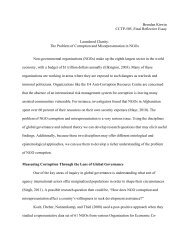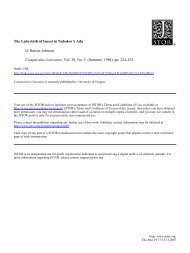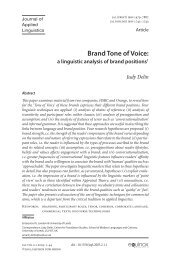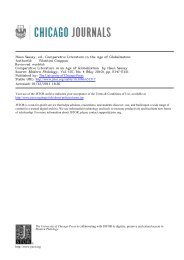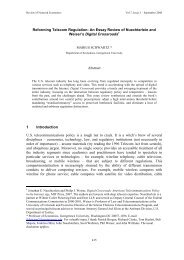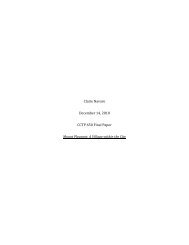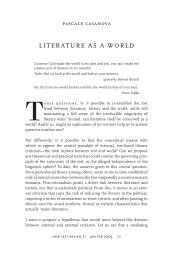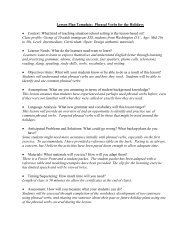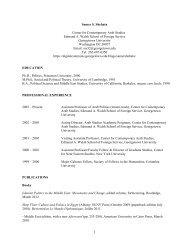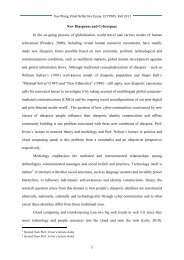roote-prokop-2013-g3-drosophila-genetics-training-all
roote-prokop-2013-g3-drosophila-genetics-training-all
roote-prokop-2013-g3-drosophila-genetics-training-all
You also want an ePaper? Increase the reach of your titles
YUMPU automatically turns print PDFs into web optimized ePapers that Google loves.
A. Prokop - A rough guide to Drosophila mating schemes 14<br />
gene function). On the other hand these mutations provide important markers to be used during<br />
genetic crosses and, hence, for mating scheme design. A few marker mutations commonly used for<br />
fly work are illustrated in Fig. 9.<br />
Figure 10. The use of balancers in stock maintenance<br />
A cross of two parents (P) heterozygous for the homozygous embryonic lethal mutation lamininA (lanA)<br />
and the recessive and viable marker mutation e (ebony, dark body colour). Both mutations are on the 3 rd<br />
chromosome and kept over a balancer. The mutant chromosome is shown in orange, the balancer<br />
chromosome in red, parental <strong>all</strong>eles in blue, maternal in black. The first filial generation (F1) is shown on<br />
the right. It is compared to a par<strong>all</strong>el cross (left) where the balancer was replaced by a wildtype<br />
chromosome (white). In the par<strong>all</strong>el cross, only the two combinations containing lanA in homozygosis are<br />
lethal (black strikethrough). Out of 6 viable combinations, only two are identical to the parents. In the<br />
cross with balancers, also the homozygous balancer constellation is eliminated (blue strikethrough) as<br />
well as <strong>all</strong> combinations involving recombination (red strikethrough). Only the combinations identical to<br />
the parental genotype are viable, ideal for stock maintenance.<br />
4.3. Balancer chromosomes<br />
Balancer chromosomes are essential for the maintenance of mutant fly stocks as well as for mating<br />
scheme design [3]. Balancer chromosomes carry multiple inversions through which the relative<br />
positions of genes have been significantly rearranged. Balancer chromosomes segregate norm<strong>all</strong>y<br />
during meiosis, but they suppress recombination with a normal sequence chromosome and the<br />
products of any recombination that does occur are lethal due to duplications and deletions of<br />
chromosome fragments (aneuploidy of chromosome fragments). In addition, most balancer<br />
chromosomes are lethal in homozygosis. Together these properties are essential for stock<br />
maintenance, since they eliminate <strong>all</strong> genotypes that differ from the parental combination (Fig. 10).<br />
First chromosomal balancers (FM7, first multiply-inverted 7) are usu<strong>all</strong>y viable in homo- or<br />
hemizygosis, but carry recessive mutations such as sn X2 and lz s that cause female sterility in<br />
homozygosis. The positive effect for stock maintenance is the same (Fig. 11). The third key feature<br />
of balancer chromosomes is the presence of dominant and recessive marker mutations.<br />
Through their dominant marker mutations balancer chromosomes are easy to follow in mating<br />
schemes. For example, by making sure that a recessive mutant <strong>all</strong>ele of interest is always kept<br />
over dominantly marked balancers, the presence of this <strong>all</strong>ele can be "negatively traced" over the<br />
various generations of a mating scheme - especi<strong>all</strong>y since recombination with the balancer



